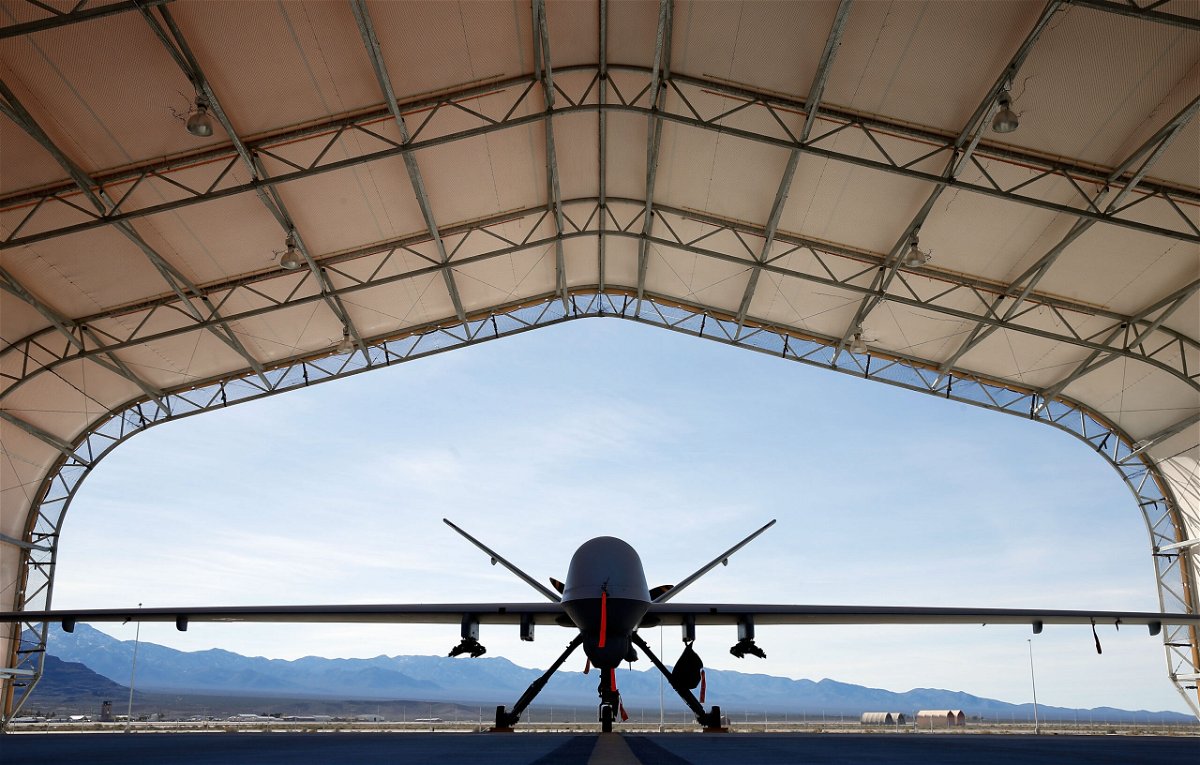New US drone routes over Black Sea ‘definitely limit’ intelligence gathering, says US official

New US drone routes over the Black Sea 'definitely limit' intelligence gathering
By Jim Sciutto, Chief National Security Correspondent
The US decision to fly its surveillance drones further south over the Black Sea after a Russian jet collided with a US drone earlier this month “definitely limits our ability to gather intelligence” related to the Ukraine war, a senior US military official tells CNN.
Flying drones at greater distances reduces the quality of intelligence they can gather, a US military official explained, noting that spy satellites can compensate to some degree but have shorter times over targets, again reducing effectiveness relative to surveillance drones.
After the Russian jet collided with a US Reaper drone earlier this month, the US began flying its surveillance drones further south and at a higher altitude over the Black Sea than previously, placing them further away from airspace surrounding the Crimean peninsula and eastern portions of the Black Sea.
When CNN first reported this change, one US official said the new routes were part of an effort “to avoid being too provocative,” as the Biden administration continues to be careful to avoid any incident that could escalate into a direct conflict with Russian forces. The official said the drone flights would continue this way “for the time being,” but added there is already “an appetite” to return to the routes closer to Russian-held territory.
Asked about the new routes’ impact on intelligence gathering, Pentagon spokesman Brig. Gen. Patrick Ryder told CNN, “We’re not going to discuss missions, routes, or timing of operations. We’re also not going to discuss intelligence operations other than to say we maintain a robust ISR capability in the region and beyond.” A spokesperson for the National Security Council referred questions to the Pentagon.
In the wake of the collision with the US MQ-9 Reaper drone on March 14, US officials have repeatedly said that the US would continue to fly in international airspace. However, the new routes place those flights more than 40 nautical miles from the Ukrainian coast, rather than the 12 nautical miles normally recognized as the limit of a nation’s airspace.
According to the senior US military official, there is concern that once the US has moved its flight routes away from areas closer to the Ukraine coast, it will be harder to return to them and assert freedom of flight for US aircraft. The US Navy has not sailed into the Black Sea since December 2021.
The downing of the drone marked the first time Russian and US military aircraft had come into direct physical contact since Moscow launched its invasion of Ukraine.
Defense Secretary Lloyd Austin said after the incident the US would “continue to fly and to operate wherever international law allows.”
The-CNN-Wire
™ & © 2023 Cable News Network, Inc., a Warner Bros. Discovery Company. All rights reserved.
CNN’s Oren Liebermann contributed to this report.